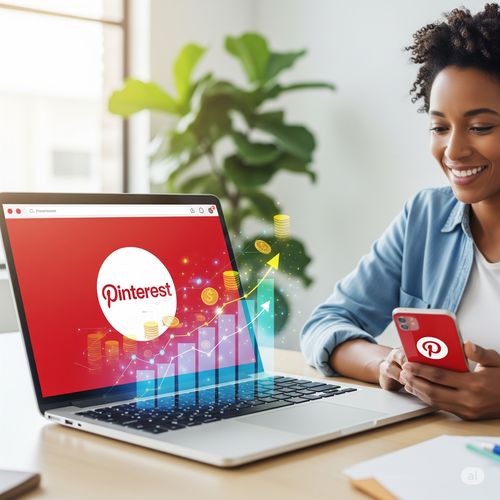Pinterest for Beginners: From Zero to Profit

Are you looking for a new way to drive traffic, build your brand, and even make money online? If you’ve heard about Pinterest but feel intimidated by where to start, you’ve come to the right place. Pinterest isn’t just a place to find recipes and home decor inspiration; it's a powerful visual search engine with over 450 million active users. In this guide, we'll take you from a complete beginner to someone who can leverage Pinterest for real-world profits.
1. Get Your Account Set Up for Success
Before you can think about making money, you need a solid foundation.
- Create a Business Account: This is the most crucial step. A business account gives you access to Pinterest Analytics, which provides valuable insights into what your audience is engaging with. You can also run ads and access more advanced tools.
- Optimize Your Profile: Your profile is your digital storefront. Use a clear, professional profile picture (like your brand's logo or a headshot). In your bio, use keywords that describe your niche and what people can expect from you. Don't forget to include a clear call to action and a link to your website or a lead magnet.
- Claim Your Website: Claiming your website verifies that you are the owner and allows you to see analytics for pins created directly from your site. This is essential for tracking performance.
2. Master the Art of the Pin
Pins are the fundamental building blocks of Pinterest. To succeed, you need to create pins that not only look good but also perform well.
- Design Eye-Catching Pins: Pinterest is a visual platform, so quality matters. Use a vertical aspect ratio (2:3 is ideal, e.g., 1000 x 1500 pixels). Use high-quality, bright images, and bold, easy-to-read text overlays that grab attention. Canva is a fantastic free tool for this.
- Write Compelling Pin Titles and Descriptions: This is where the "search engine" part comes in. Use keywords naturally in your pin titles and descriptions to help people find your content. Think about what people would search for and make sure your text answers that need.
- Create Idea Pins and Video Pins: Pinterest loves fresh content. Mix up your pin types. Idea Pins (formerly Story Pins) are a great way to tell a story or share a multi-step tutorial. Video Pins can be used to showcase a product or demonstrate a process in a dynamic way.
3. Strategize Your Content and Boards
A messy, disorganized account won't get you anywhere. You need a clear strategy.
- Create Niche-Specific Boards: Your boards should act as organized folders for your content. Name them with clear, keyword-rich titles. For example, instead of "Food," create a board called "Healthy Weeknight Dinner Recipes."
- Pin Consistently: The Pinterest algorithm rewards consistency. Aim to pin new content regularly, whether it's daily or a few times a week. Using a scheduling tool like Tailwind can help automate this process.
- Follow the 80/20 Rule: A good rule of thumb is to pin 80% of other people’s relevant content and 20% of your own. This keeps your boards full of fresh ideas and makes you a valuable curator in your niche.
4. Monetize Your Pinterest Presence
Now for the exciting part—turning your efforts into income.
- Affiliate Marketing: This is one of the easiest ways to start. Find products you love and use affiliate links in your pin descriptions. Just make sure to disclose that it's an affiliate link, as per FTC guidelines. You can promote physical products, digital products, or even services.
- Driving Traffic to a Blog or Website: This is the most common and powerful monetization method. Create pins that link directly to your blog posts, YouTube videos, or product pages. Once users are on your site, you can monetize through ad revenue, selling your own products, or collecting leads.
- Selling Your Own Products: Have an e-commerce store or digital products like courses, e-books, or printables? Create beautiful product pins that link directly to your shop.
- Promoting Your Services: Are you a coach, consultant, or freelancer? Create pins that showcase your expertise, share testimonials, and link to a services page where potential clients can learn more.
5. Analyze and Adapt
The journey from zero to profit isn't linear. You need to pay attention to what's working and what isn't.
- Use Pinterest Analytics: Regularly check your analytics to see which pins and boards are driving the most traffic and engagement. What keywords are performing best? What topics are your audience most interested in?
- A/B Test Your Pins: Try different pin designs, titles, and descriptions. This helps you figure out what your audience responds to.
- Stay Up to Date: Pinterest is always changing. Keep an eye on new features and best practices to stay ahead of the curve.
Getting started on Pinterest can feel overwhelming, but by following these steps, you'll be well on your way to building a powerful platform that generates traffic and revenue. It takes patience and consistency, but the potential for growth is immense. Now, it's time to start pinning!
© Copyright SorinBlogger
